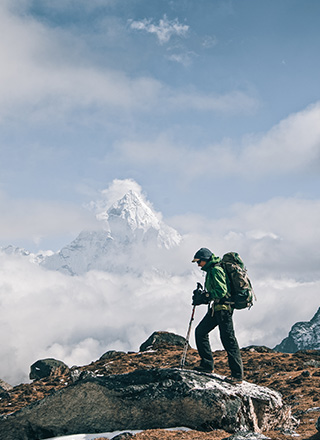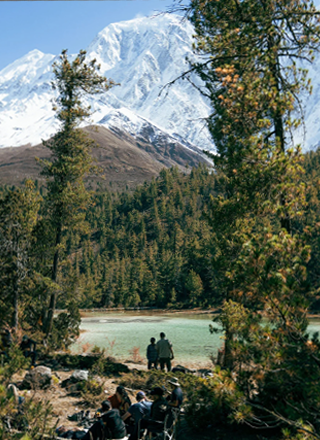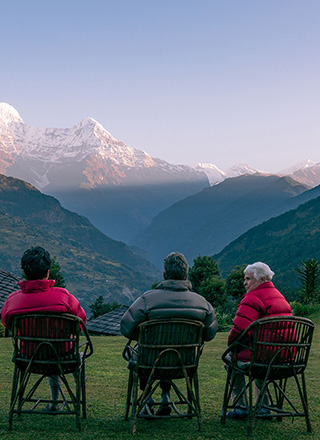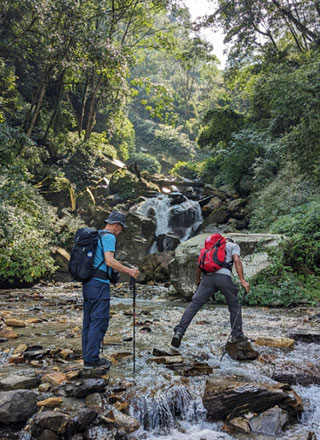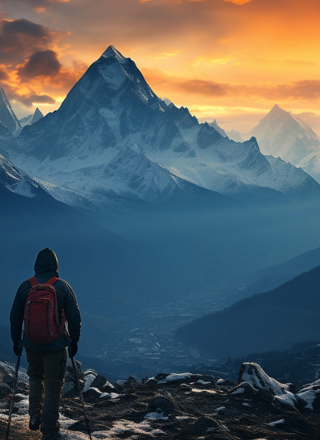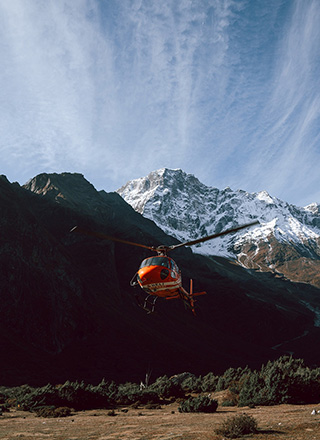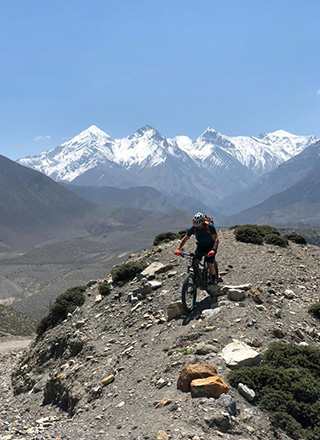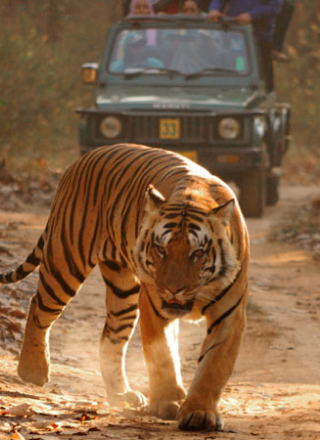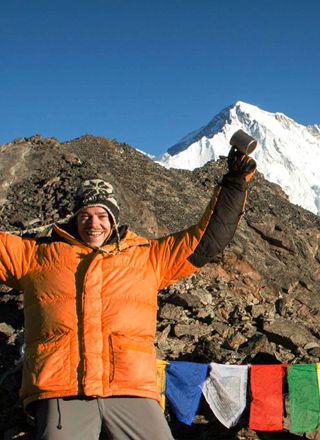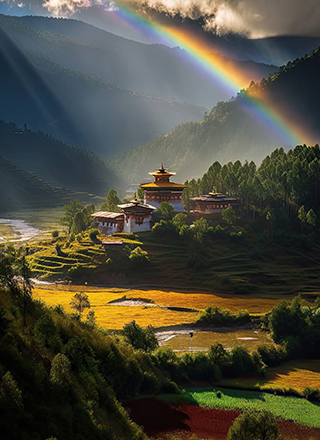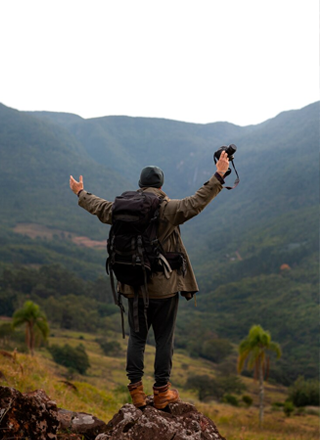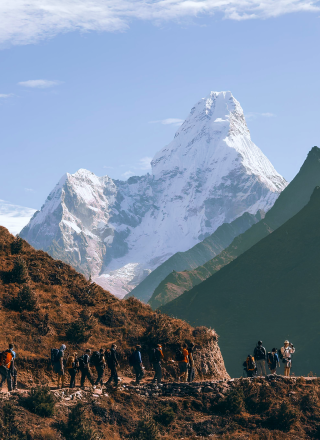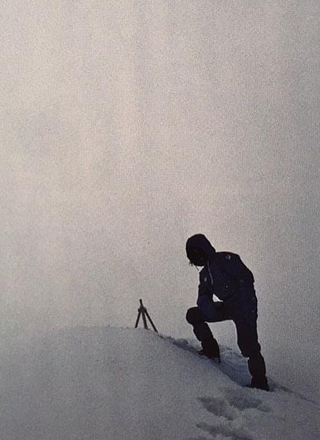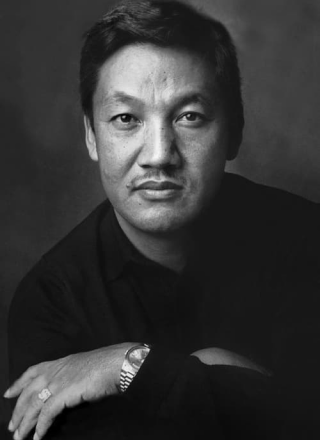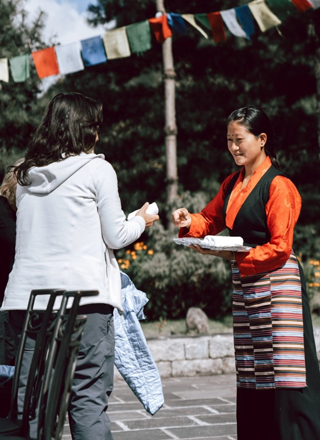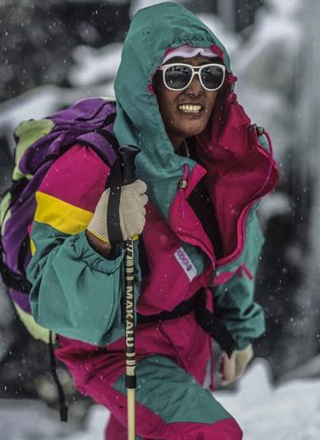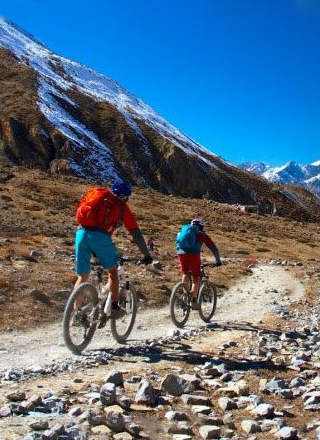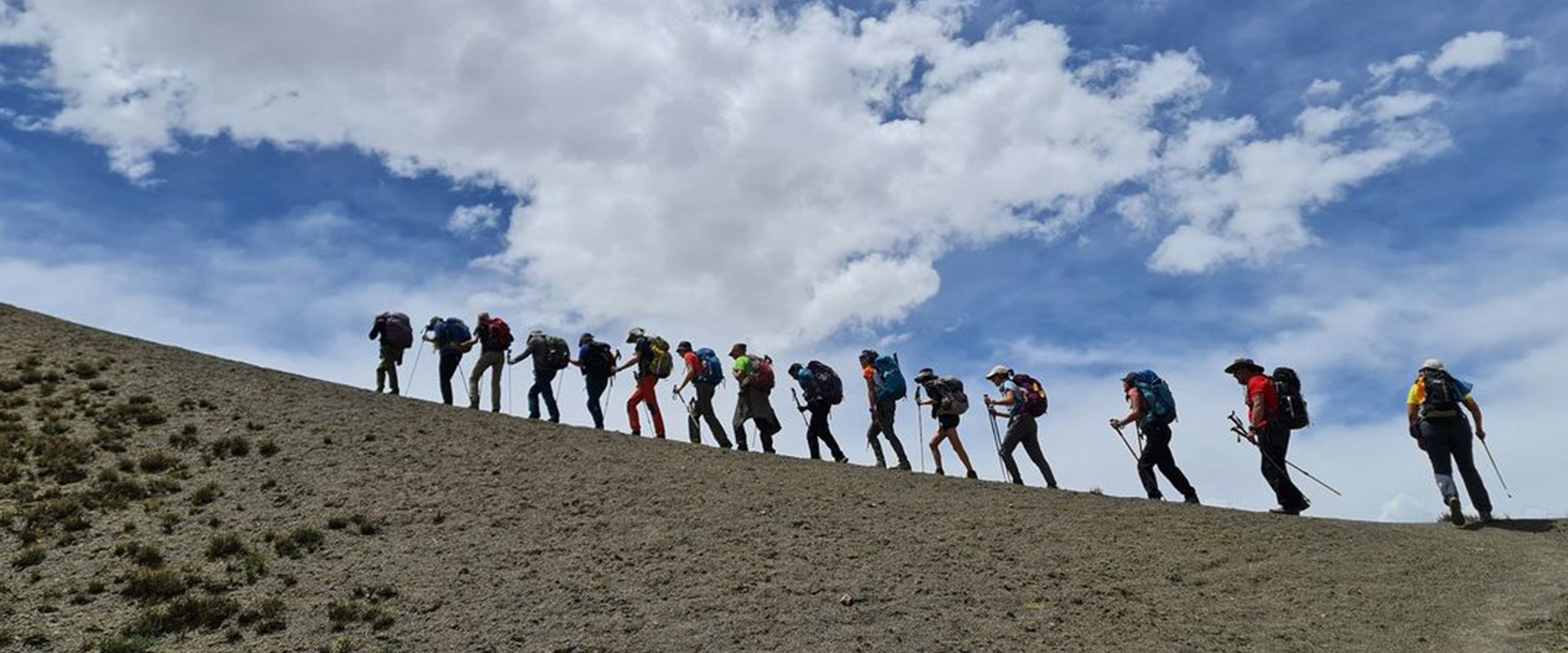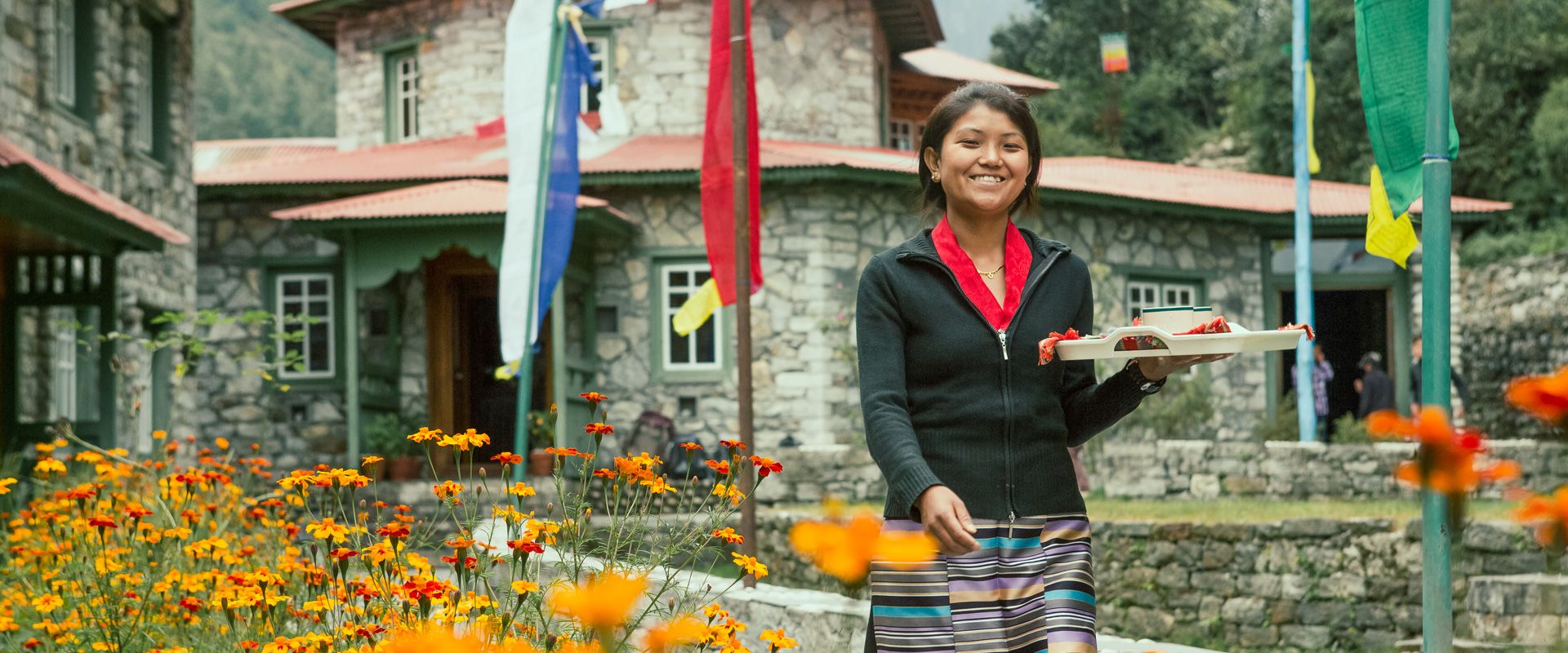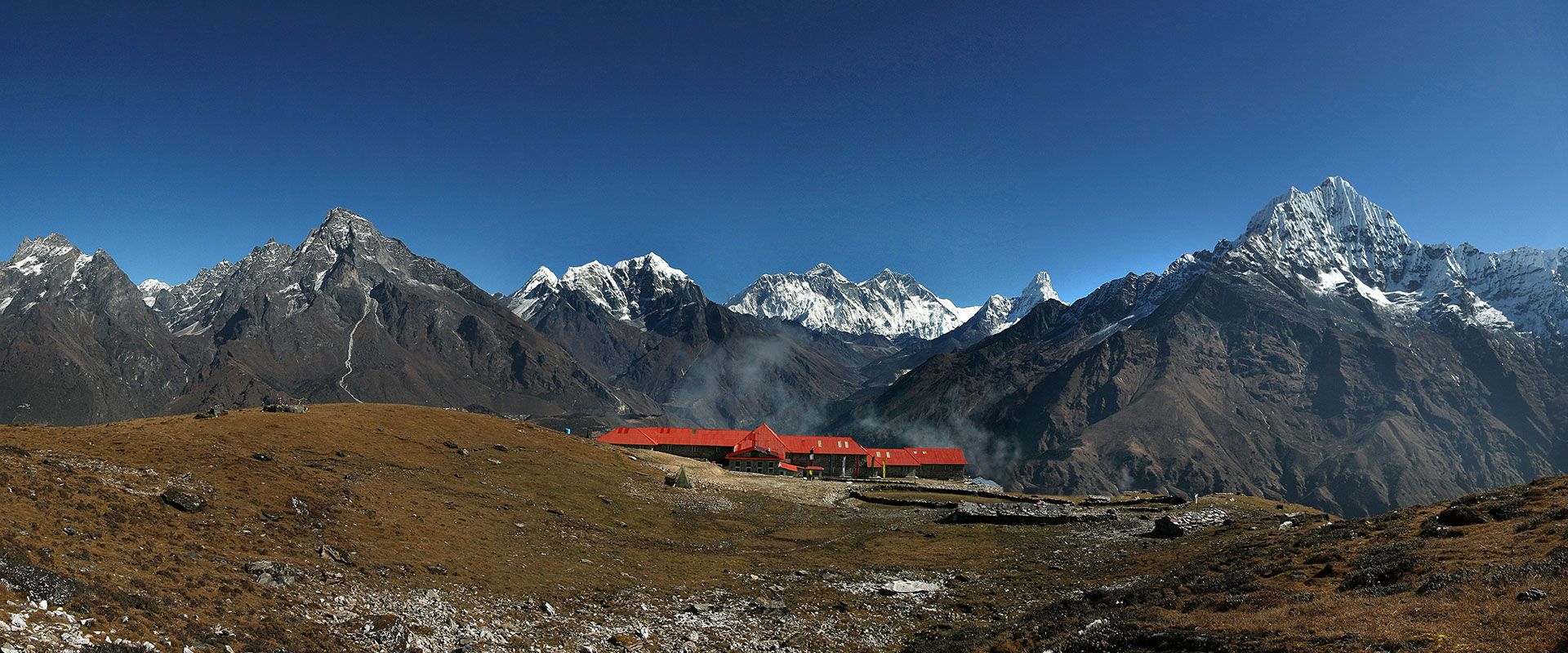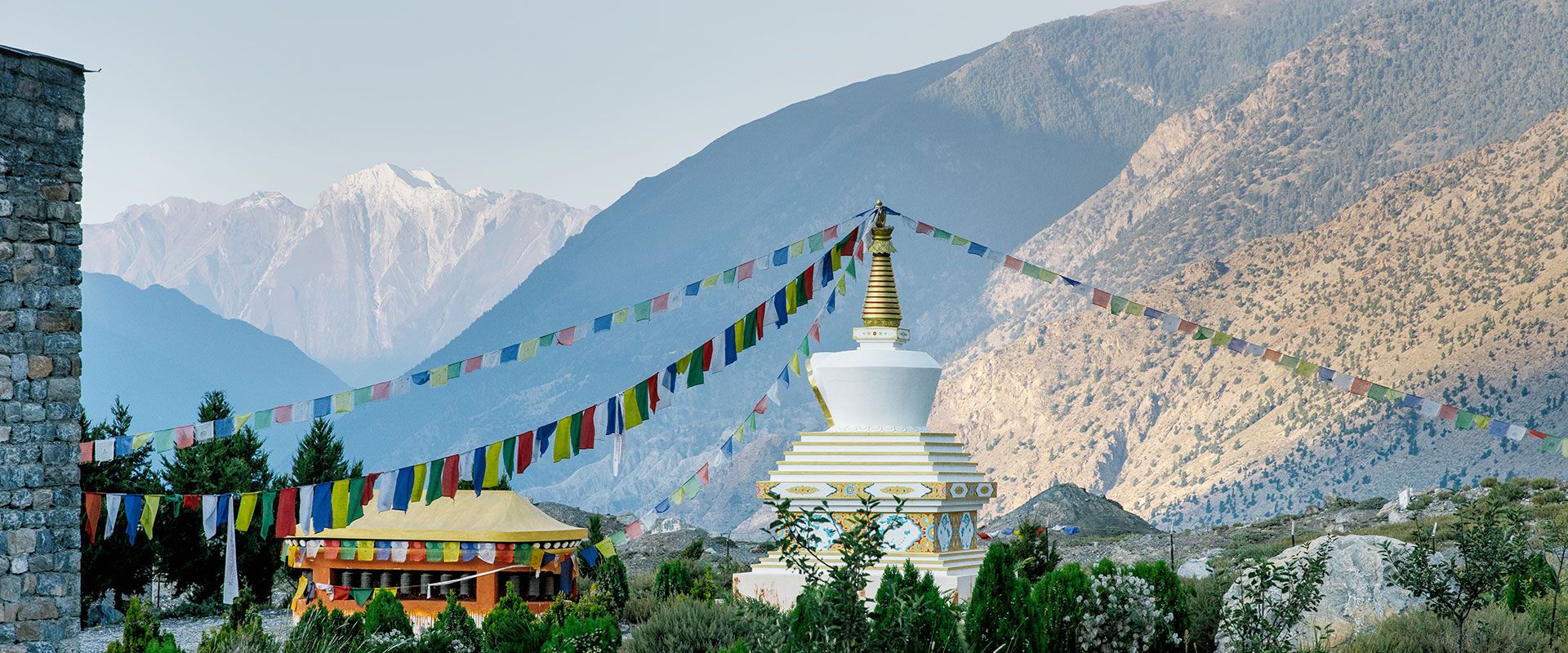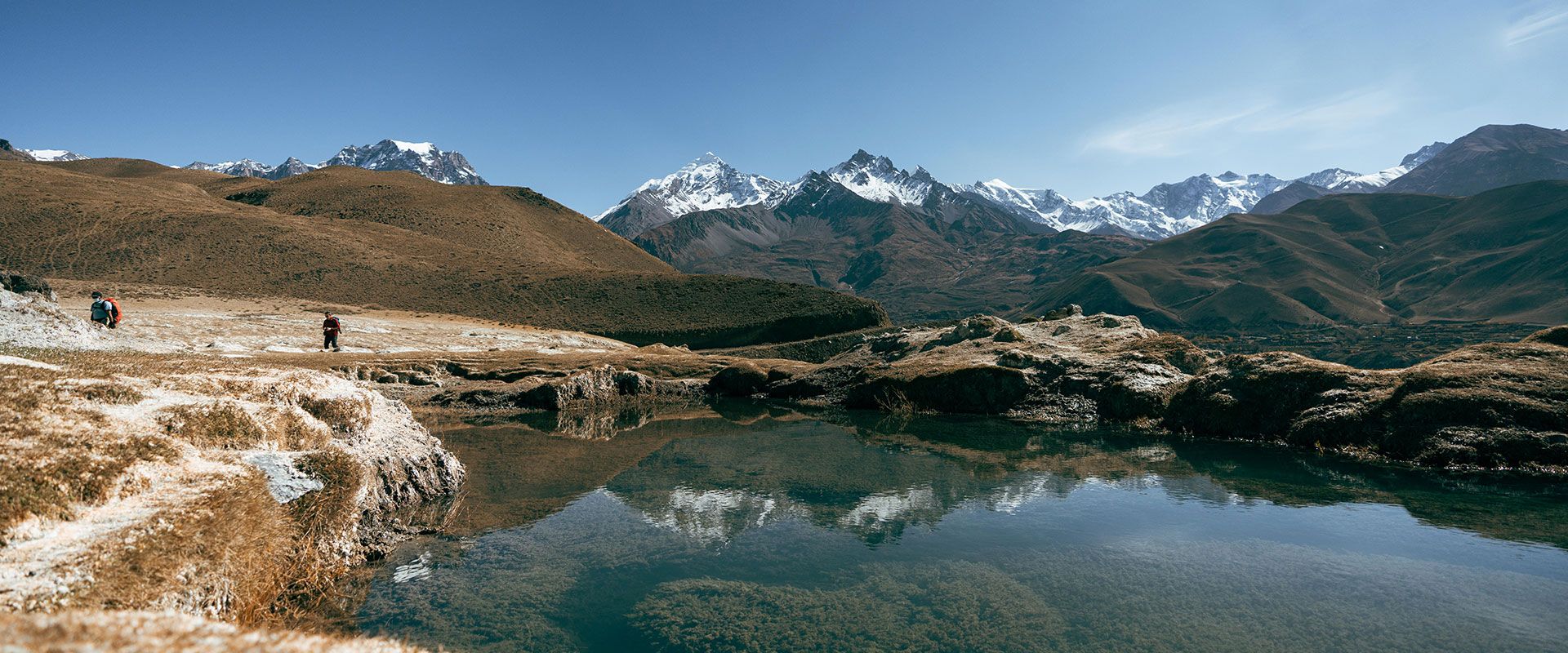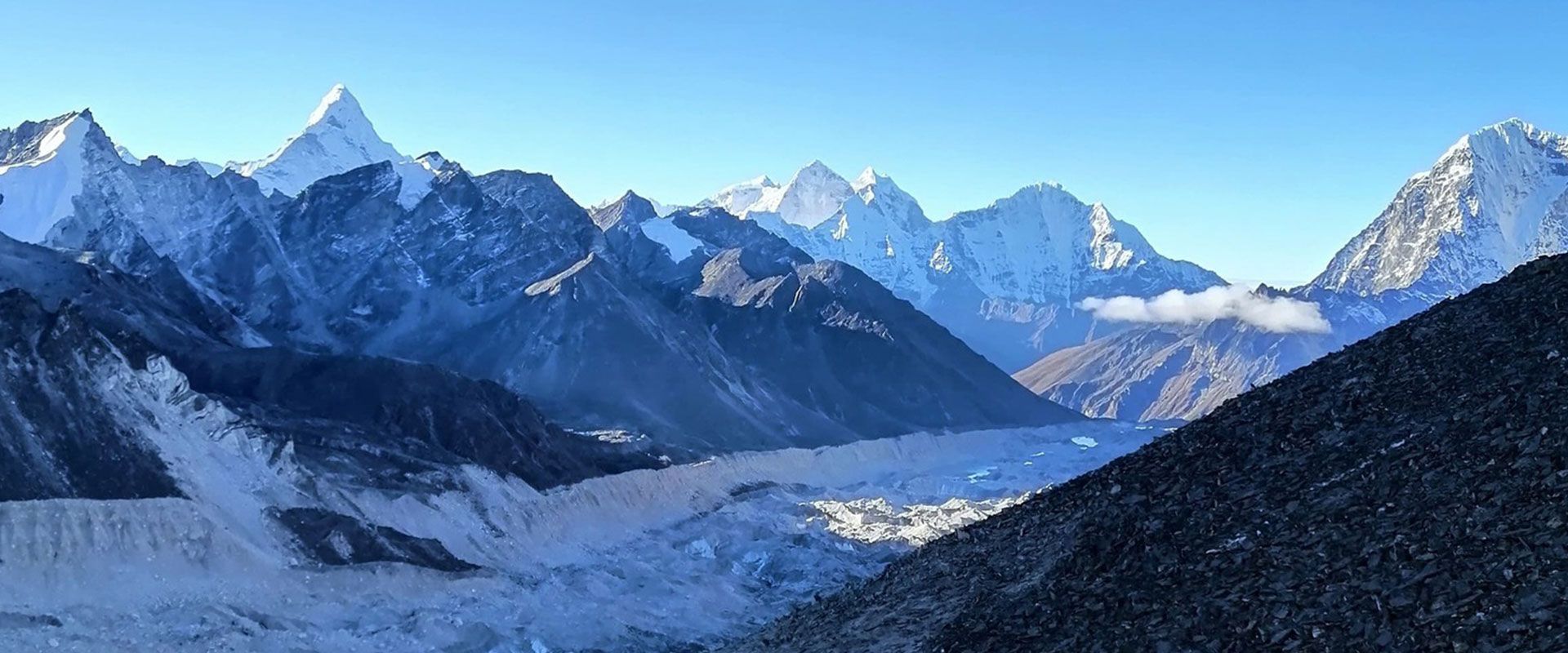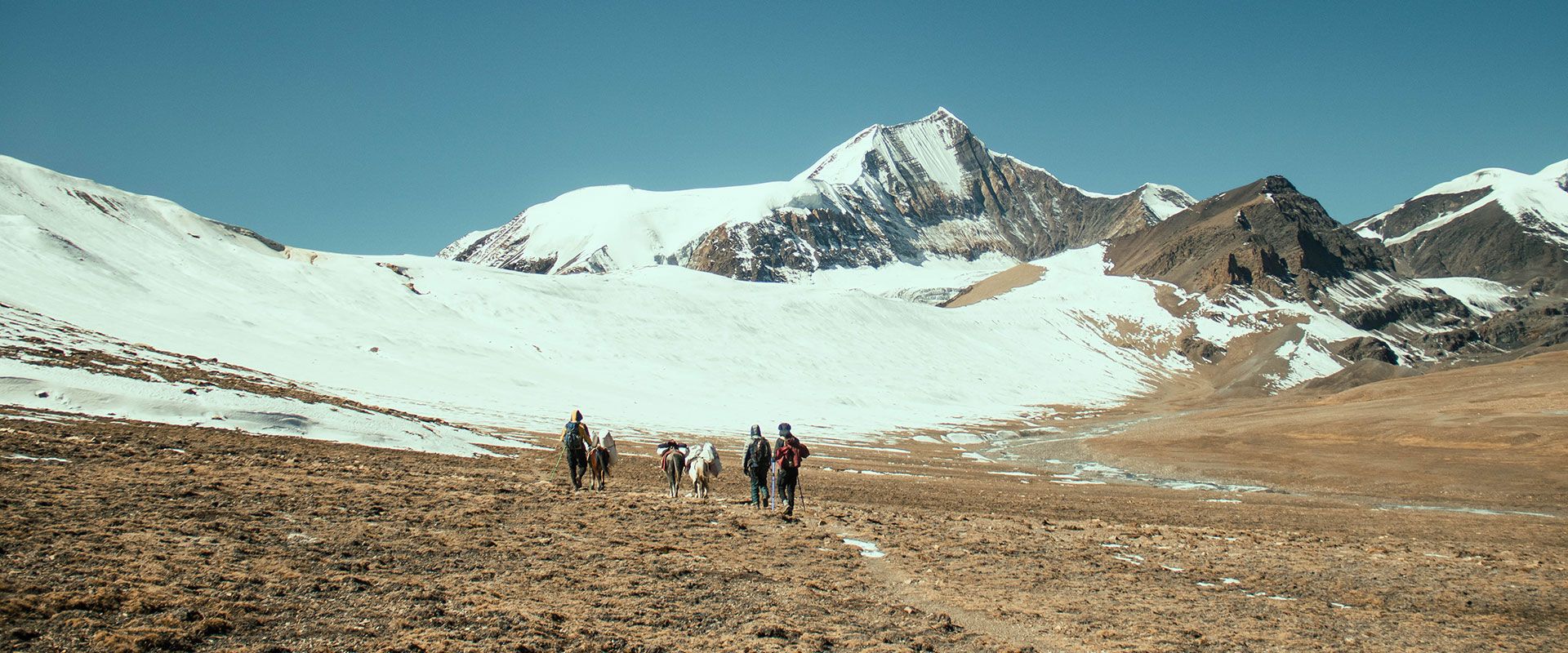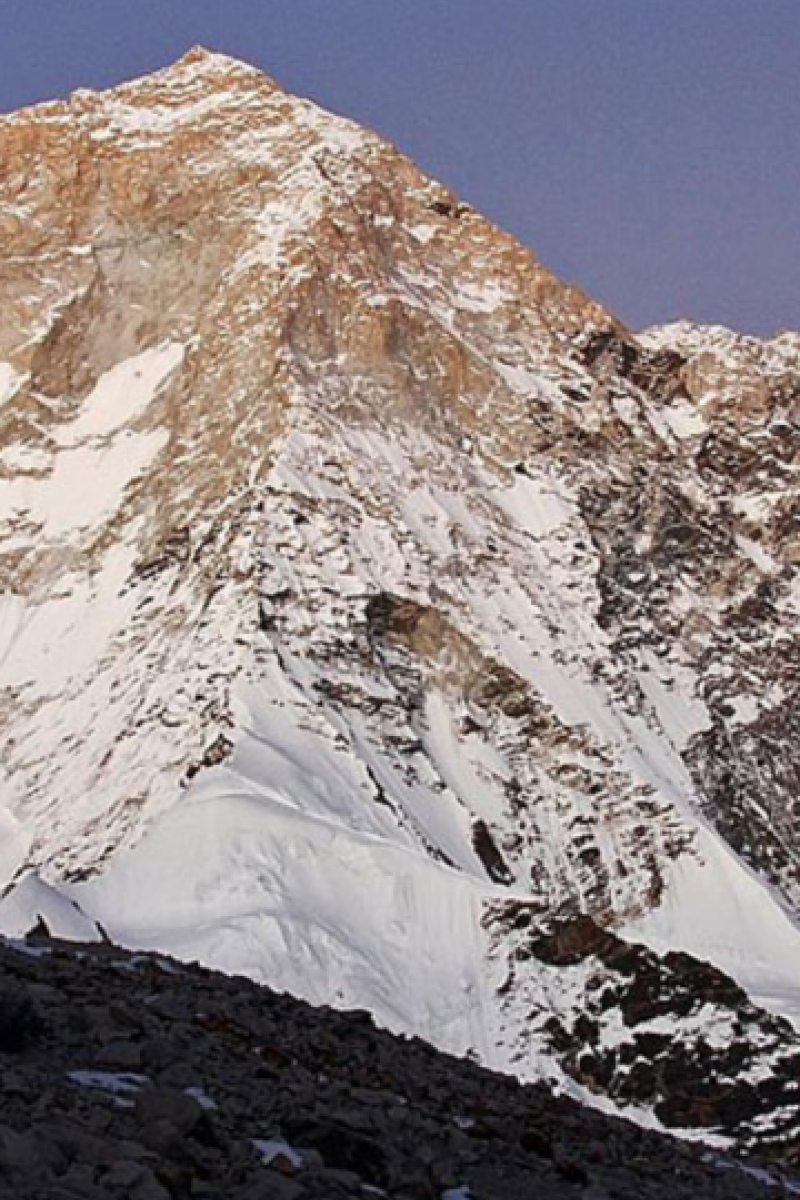- Travel Styles
- Destinations
- Signature & Charity Treks
- Special Project
- About Us
- Contact Us
13 days
12 Nights
Kopra Ridge

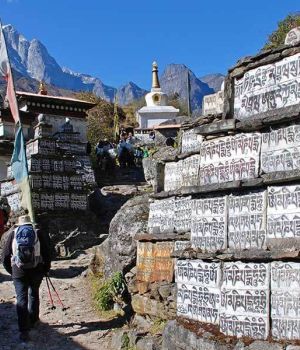
OVERVIEW
Scenic Annapurna trek: Kopra Ridge, stunning vistas.
An itinerary that departs from the popular Annapurna balcony to enter an authentic, south-facing area. Maximum altitude: 3 600 meters in the hamlet of Kopra, eagle’s nest perched on a ridge.
There, Annapurna I (8,091 m), Dhaulagiri I (8,167 m), and many peaks over 7,000 meters are offered to you. One of the most beautiful panoramas accessible to any hiker! After crossing beautiful Gurung villages and forests of rhododendron (in bloom from February to March), the trek ends in the pleasant city of Pokhara.
Trip Overview
Destination
Region:
Activity:
Max. Altitude:
Type:
Group size:
Difficulty:
Highlights
- The exceptional panorama from the hamlet of Kopra (3600m).
- Domestic flight to avoid the long road transfer between Pokhara and Kathmandu.
- The magnificent ridge course between Poon Hill and Mohare Danda.
- Kyayar lake at 4060m
- The moderate altitude, ideal for a first trek in Nepal.
ITINERARY
TAILORED TRIP FOR YOU
Arrival in Kathmandu (1350m)
Depending on your arrival time, our representative will be at the airport to receive you and transfer you to your booked hotel.
Meals: B
Fly to Pokhara in the morning and drive to Kimche (1690m). Trek to Ghandruk (1990m) – 7 hrs drive/ 2 hrs trek
Morning flight to Pokhara and transfer by road to Kimche, where our rest of the team will be waiting for us. Once we arrive at Nayapul, we turn to the Modi Khola River, which we follow to the village of Birethanti. The track becomes bumpier until Kimche. If the view is clear, the sacred summit of Machhapuchhre (6993m) stands proudly beyond the village of Shyauli. We leave the bus at Kimche and start walking. The path goes winding. In the village of Chane, the beautiful panoramas await us. From Chane, the trail climbs up the village of Ghandruk, where we stop to spend the night. Superb views of the Annapurnas and the Machhapuchhre.
Meals: BLD
Trek to Tadapani (2690m) – 5 hrs trek
Ghandruk is the largest village of the Gurung ethnic group. Each family prides itself on having at least one member belonging to the clan of the famous warriors, the Gurkhas! We take the time to visit the village, temples and museums, before starting the march towards Tadapani. Tadapani means “distant water” in Nepali. We continue the ascent to the pass of Komrong Danda (2650m) along with a very nice view of Machhapuchhre. A balcony trail leads to the villages of Melanje (2050m) and Chiule (2050m). The road straightens and crosses a forest of imposing rhododendrons, real trees, blooming in March. Set on the ridge, Tadapani (2590m) offers a view over the steep valley leading to the Annapurnas sanctuary. Annapurna III (7555m) and Gangapurna (7454M) dominate the scene … Night in lodge.
Meals: BLD
Trek to Isharu (3460m) – 5 hrs trek
As we leave the main road that leads to Ghorepani the trail follows a path rarely used by people other than the inhabitants. The path climbs first through a thick forest of rhododendrons before arriving at the pastures of water buffalos. Grass shaved is a precious commodity in these villages. The views of the Annapurna Range emerging above the tree line are stunning. We arrive at Dobato, at the place called Isharu.
Meals: BLD
Trek to Chistibung (3020m) – 5 hrs walk
We leave early to witness the sunrise. We progress through a forest of rhododendrons. At the top, the Dhaulagiri appears in all its splendor and completes the spectacle of the Annapurna South, Huinchuli and Machhapuchhre. We descent back to the community lodge of Dobato after the sunrise view and for breakfast then departure for Chistibung. Beautiful ridge course, small pass, and long descent in the rhododendrons to reach the bottom of the valley, then ascended, always in the rhododendrons.
Meals: BLD
Trek to Kopra ridge (3642m). Hike to sacred lake of Khayar (4025m) – 3 hrs trek. 3 hrs hike.
The path goes through a beautiful rhododendron forest to a small sacred pond. The trail slips between the blocks and joins a spur from where the view of the Dhaulagiri is remarkable. Magnificent views, extraordinary panorama formed by the Annapurna South, close to a few kilometers.
After lunch, to enjoy even more of this wonderful landscape, a hike on the ridges that dominate Kopra Ridge, towards the sacred lake of Khayar (4025m), is possible. In summer, a pilgrimage takes place on the shores of the lake.
Meals: BLD
Trek to Swanta (2200m) – 6/7 hrs trek
We follow the steeply descending trail. This area is known for its wildlife; If you are lucky enough, you may see a Himalayan thar, robust and agile mammal, or a pheasant Danfe, Nepal’s national animal. We find the dense forest of rhododendrons; pass before the lodge of Chistibung before reaching a bridge of wood that spans a river. The path that continues is pleasant and well marked. We arrive at the pretty hamlet of Swanta, in the middle of the rice fields.
Meals: BLD
Trek to Ghorepani (2800m) – 4/5 hrs trek
We descend to a small river and take a quick look at the water mill supplying the numerous villages in the vicinity. From there, crossing the suspension bridge and climbing up to the village of Chittre. We then join the wide road linking Tatopani to Ghorepani (end of the great tour of Annapurna). The path goes up to reach the village of Ghorepani, from where the views of the stages of the previous days are magnificent.
Meals: BLD
Poonhill (3160m) and trek to Mohare danda (3300m) – 4/5 hrs trek
Rise to the dawn for the sunrise in Poon Hill, we are not alone! While most visitors of the day turn back, we have breakfast in front of the show of Dhaulagiris and Annapurnas. Then we take the ridge of Mohare Danda and keep the Dhaulagiri in the line of sight all along. We leave the rhododendrons, pass in front of a splendid sheepfold of yaks and buffalos and remain on the crest lines. Arrival at the community lodge of Mohare Danda, from where the view, once again, is impregnable. Lamjung Himal, Machhapuchhre, Hiunchuli, the Annapurnas on one side and on the other, the Dhaulagiris, the Tukuche and even the Phewa lake of Pokhara.
Meals: BLD
Trek to Nangi (2260m). Drive to Pokhara – 4 hrs trek/ 5 hrs drive
Pokhara Departure morning after admiring the sunrise, we follow a magnificent peak first uncovered than in the forest until a small pass and then down to a clearing. Ascent to the small pass of Hampal Pass (2990 m). Beautiful view over the deep valley carved by the Kali Gandaki between Baglung and Beni. Effective descent to the village of Nangi. Here, a trail takes us to Pokhara.
Meals: B
Fly back to Kathmandu
We will enjoy our last view of the high mountains while flying back to the Kathmandu from Pokhara. The snow-capped mountains will be worth to watch. After 25 minutes of flight, we arrive in Kathmandu domestic terminal where our representative will be waiting to take us back to the hotel where you can enjoy your chilled beer and warm shower.
Meals: B
Full day sightseeing in Kathmandu
Today after the breakfast we’ll be touring around the Kathmandu valley. The Durbar Squares, Pashupatinath temple, Swoyambhunath Temple and Boudhanath Stupa are the major sight-seeing areas around the Kathmandu valley. These all are listed in a world heritage sites. The Durbar square shows us the regal life of ancient periods. Pashupatinath temple is one of the most sacred Hindu pilgrimages. Swoyambhunath Temple and Boudhanath Stupa is the Buddhist temple which is very popular around the globe. Swoyambhunath is also known as money temple stands on the hilltop west of the Kathmandu valley. It can also be known as the viewpoint of Kathmandu valley. Boudhanath temple is the biggest Chhorten ever made around the world.
Meals: BLD
Final departure
Depending on your flight time you will be transferred to the airport. The airport check-in is 3 hours prior to the departure time and the hotel checkout time is 11 PM. In case your flight is late evening please let us know if you require half day use of the hotel.
Our representative will meet you at the hotel and transfer you to the airport.
Meals: B
Included
- 3 nights in Kathmandu Hotel as per program on Bed & Breakfast basis
- 1 night in Pokhara Hotel as per program on Bed & Breakfast basis
- 8 nights in local Lodge as per program on full board basis
- Flight: KTM-Pokhara-KTM (Regular Flight) with airport taxes
- National Park Fees & TIMS Permit Fee
- 1 full day sightseeing in Kathmandu with English speaking tour guide
- 1 English Speaking Guide (from Kathmandu)
- 1 porter for every 2 members
- All staffs insurance & daily wages
- All Airport transfers
Not Included
- Lunch & Dinner in Kathmandu
- Personal Equipment & Insurance
- Personal Expenses (Battery recharge on local lodge, laundry, telephone, etc)
- Nepal Visa fee US$ 40 per person
- Emergency Evacuation if required
- Other personal Expenses
- Tips for Staffs
ACCOMMODATIONS
WHERE YOU WILL STAY
This tour spends three nights in a hotel in Kathmandu, one night in Pokhara and eight nights on the trek in lodges (tea houses).
In Kathmandu we normally use a 3-star hotel located within walking distance of the Thamel. In Pokhara, we use 3 star hotel located near the lake side.
On the trek, we will stay in teahouses for the most part.
FAQs
ESSENTIAL INFO
adventure that speaks to your heart.
Most nationalities require a visa for Nepal, which can be obtained in advance or on entry. If you wish to apply before departure the current visa cost is £20 for a 15 day visa and £35 for a 30 day visa for UK passport holders. The current cost of a visa on arrival is US $25 for 15 days, US $40 for 30 days or if extending your stay $100 for 90 days. All are multiple entry. The visa on arrival fee can be paid for in cash in US Dollars, Pounds Sterling or Euros. You will also need a passport photo. Application forms are available in the immigration hall (or for electronic passports there are visa registration machines which, after inserting your passport, automatically fill out a form for you). You must firstly join the queue to pay the visa fee, and then go to the relevant immigration desk to obtain your 15, 30 or 90 day visa stamp. There can be long queues for visas on arrival.
Non UK nationals should check requirements with their nearest embassy (a few nationalities are not permitted visas on arrival).
There are no mandatory vaccination requirements. Recommended vaccinations are: Polio, Tetanus, Diphtheria, Typhoid, Hepatitis A. The risk of malaria is present in certain regions only (such as Chitwan); you may wish to consult your GP or travel health clinic for further advice. Dengue fever is a known risk in places visited. It is a tropical viral disease spread by daytime biting mosquitoes. There is currently no vaccine or prophylaxis available for Dengue, and therefore the best form of prevention is to avoid being bitten. We recommend you take the usual precautions to avoid mosquito bites. Most of our trips to Nepal go to high altitudes where there is a risk of being affected by Acute Mountain Sickness. Our itineraries are designed to enable everyone to acclimatise to these altitudes, but you should be aware that it is still possible for you to be affected. Please refer to the TRIP NOTES for complete advice on AMS.
Breakfast is included throughout the trip and all meals are provided while camping (all breakfasts, 3 lunches and 2 dinners).
Breakfast is included throughout the trip and all meals are provided while camping. On trek the breakfast will be a set menu usually consisting of porridge and toast. Any additional items that are not included in the set menu should be ordered and paid for separately. We do not include lunch and dinner in the tea-houses, allowing you to choose what you want to eat and when. Although most lodges have almost identical menus, they are reasonably extensive and offer a varied selection, ranging from traditional Nepalese dal bhat to pizza and apple pie.
Although meat is available in the tea houses, we advise against eating it on trek. The meat has often been carried in the heat from lower altitudes for several days before reaching the lodges, and can cause stomach upsets or illness. Germs can also be spread by handling dirty money – we recommend using hand sanitiser.
If you buy imported food and drink whilst on trek you will spend more than the suggested amount.
Drinking Water
Staying hydrated is important when undertaking any physical activity but particularly so at altitude where it is generally recommended to drink at least 3-4 litres per person per day.
We strongly encourage you not to buy bottled water on trek as this contributes to the growing problem of plastic pollution in Nepal’s trekking areas.
All tea houses will provide cold water free of charge, if requested. Although this should not be drunk untreated, we recommend that you bring a reusable bottle with a wide opening (Nalgene or similar) with you and use a SteriPEN to treat it with. A SteriPEN is a handheld UV water purifier – small, lightweight and battery powered so easy to pack for a trek. In Nepal’s trekking regions most of the bottled water isn’t strictly ‘mineral water’ anyway but is UV treated, so it’s exactly the same technology. It’s quick to use, far more effective than purification tablets, and the water is ready immediately. It’s fine to use a SteriPEN on non-boiled water so long as it isn’t cloudy or full of sediment (which is uncommon in these regions).
SteriPENs are widely stocked on Amazon, outdoor shops and other online retailers; look for the latest models but avoid USB charging ones. Better still, a SteriPEN will pay for itself over the course of the trek and you won’t leave behind a single plastic bottle – you will end up spending the same or even less than you would on bottled water, plus you can keep it for future trips.
If you prefer not to invest in a SteriPEN, the tea houses also sell boiled water for approx. Rs150-300 per litre (the price increases the higher you trek) which should not require treating. This is also perfect for a bedtime refill as it can double up as a hot water bottle.
While camping boiled water is supplied for drinking.
The main trekking season in Nepal is from October to mid-May when daytime temperatures at most altitudes are generally comfortable for walking, the sky is clear much of the time and rain and snow are occasional occurrences. Daytime temperatures will vary from 15ºC to 35ºC in the Kathmandu Valley to around 10ºC at 3,600m and progressively lower the higher we go.
Different seasons offer different advantages for trekking.
Post Monsoon/autumn: Mid-September to November. This is the main trekking season in Nepal. Day temperatures in Kathmandu are approximately above 20ºC. Skies are usually clear and days on trek are sunny and mild with clear mountain views. At the highest altitudes although the days can be nice and sunny the temperatures can drop to 10ºC and much lower. Nights will be colder with temperatures dropping as low as minus 10ºC and lower at the highest altitudes.
Pre-monsoon/spring: March to May. Both day and night temperatures will be warmer in general but haze will often build up in the afternoons. It is very hot in the lowlands and temperatures rise to 35ºC in Kathmandu. Flowers bloom in this season and this is one of the reasons people chose to trek in spring.
Snow can be expected on any departure, usually at the higher altitudes. Summit day will be a very early start (usually about 2am) and will be extremely cold. Although mostly it is calm and clear on summit day the mountain does occasionally get high winds. You need to be equipped for temperatures as low as minus 25ºC plus wind chill on summit day.
Please remember that in any mountain area the weather is never wholly predictable and you should be prepared and equipped to deal with any differences in weather beyond the conditions described above.
This is a Tough+ trek. It is activity level 9 with 16 days walking and full porterage throughout. The maximum altitude is 6,189m (or 5,545m without Island Peak) and the average is 3,680m. There are some steep ascents and descents and some narrow trails. As this trek also ascends to very high altitudes participants should be confident of their physical fitness and must have previous experience of trekking at altitude and in snow.
Although it is not compulsory to participate in the climb (the summit attempt is optional), anyone who does must have previous ice axe and crampon experience and know how to use a jumar and abseil device. There will be equipment checks and practice sessions for rope use, ice axe, crampon and harness use, abseiling and crevasse rescue. For safety reasons it is compulsory to participate in these sessions. If you do not take part the leader and climbing Sherpas will not allow you to take part in the climb.
Though technically harder than Mera Peak, for those with the necessary experience this expedition is within the reach of those seeking their first Himalayan summit. The climb requires strong lungs and a great deal of will power – it is graded alpine PD+ and starts with some rocky scrambling to a glacier. We cross the glacier roped up (there is one ladder to cross), and then come to a 200m steep 40-45 degree headwall, which leads to a 20m summit ridge. We will rope up to cross the glacier and you will be walking with an ice axe, crampons and plastic boots. There are fixed ropes up the headwall (approximately 200m) and along the summit ridge. On the ascent you will need to use a jumar and on the descent you will need to use an abseil device.
Please be aware that altitude can have a significant affect on your physical state. It is important that you take heed of the leader’s advice and decisions at all times. The leaders are trained in first aid and are well aware of AMS symptoms and will keep a close eye on the group. We ask you to refer to the altitude warning within the Trip Notes.
The climb itself is not recommended for anyone with a fear of heights or vertigo and the main trail itself crosses three modern suspension bridges over rivers and valleys – all of these have mesh sides but some are quite long and high.
ESSENTIALS
EQUIPMENT CHECKLIST
Ensure you have all the essentials to make your trip
safe and enjoyable.
Body Wear
- Gore Tex Jacket
- Gore Tex Pant
- Hiking pant
- Fleece trouser and jacket or warm jumper – Recommended not thick but warm enough that fits inside the Gore Tex pant
- Anti-sweat T-shirtEarmuffs/Ear warmers (optional)
- Thermal inner trouser
- Down jacket with hoodie
- Thermal inner trouser
- Down jacket with hoodie
Head Wear
- Sun Hat/Normal cap
- Fleece or woolen hat
- Earmuffs/Ear warmers (optional)
- Sunglasses with UV protection
- Buff Scarf / thin face mask
Hand wear
- Fleece or woolen thin gloves
- Expedition shell gloves
- Gore Tex mitten gloves
Other Equipments
- Sleeping bag (comfort rated – 15ºC)
- 30 Litre Rucksack with cover
- Large size Duffel Bag with padlock
- Headlamp with spare batteries
- Water bottles 1 Litre X 2
- Thermos
- Basic First Aid Kit including: antiseptic cream, throat lozenges, diarrhea treatment (Imodium), altitude (Diamox), painkillers, plasters and blister treatment, insect repellent, and re-hydration salts (Dioralite). Glucose tablets and multi-vitamin tablets are also a good idea.
Washing kit & Toiletries
- Waterproof washing kit bag
- Towel – medium size
- Washing soap, towel, tooth pest, tooth brush etc.
- Sun Lotion Enough +30SPF (including total bloc for lips, nose etc.)
- Hand wash & sanitizer
- Toilet paper (you can buy this in the lodges)
- Wet tissue
Foot Wear
- Trekking boots
- Hollow Out Outdoor Slipper
- Trekking socks (4-5 pair)
- Snow Gaiter
Optional Items
- Trekking poles
- Trainers or similar for use in the lodges
- Shorts
- Base layer leggings
- Gaiter
- Sleeping bag liner
- Pillowcase
- Ear plugs (particularly if you are not the one snoring)
- Travel clothes
- Camera
- Pen-knife (remember to pack sharp objects in hold baggage)
- Repair kit – (egg. needle, thread, duct tape)
“Six out of Six”
Yeti Mountain Home Thame was the third of six Yeti Mountain Homes we stayed in. Loved the ambiance. Loved the village. A huge bedroom. Once again – brilliant food and warm welcoming staff. The decor was stunning and the house arrangement interesting.
LOIS OMAN

“Six out of Six”
Yeti Mountain Home Thame was the third of six Yeti Mountain Homes we stayed in. Loved the ambiance. Loved the village. A huge bedroom. Once again – brilliant food and warm welcoming staff. The decor was stunning and the house arrangement interesting.
LOIS OMAN

“Six out of Six”
Yeti Mountain Home Thame was the third of six Yeti Mountain Homes we stayed in. Loved the ambiance. Loved the village. A huge bedroom. Once again – brilliant food and warm welcoming staff. The decor was stunning and the house arrangement interesting.
LOIS OMAN

FEATURED JOURNEYS
ALSO SEE THESE TRIPS
We have handpicked some of our favourite iconic Nepal trips we think you will love.
ENQUIRY
CONTACT OUR TRAVEL EXPERTS
within 24 hours.
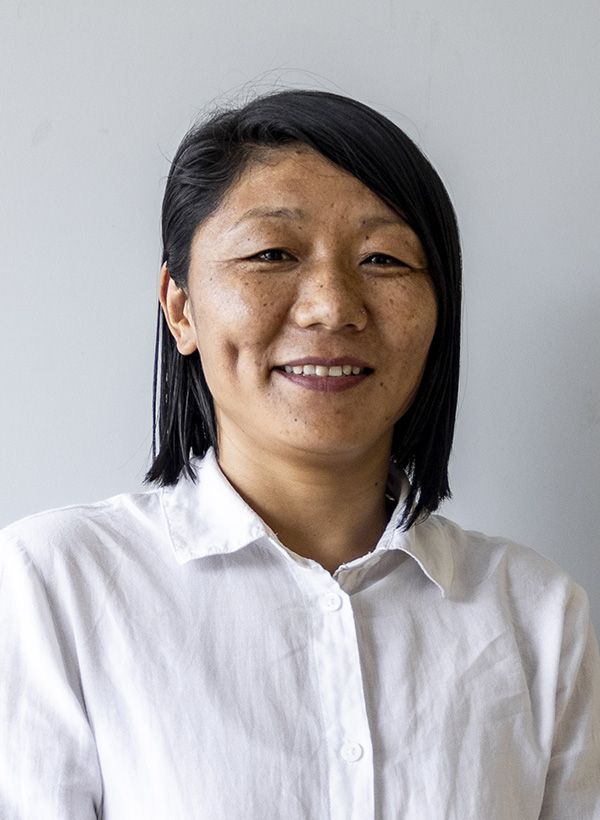
NIRMALA GURUNG 
+977 9801223978
nirmala@thamserku.com
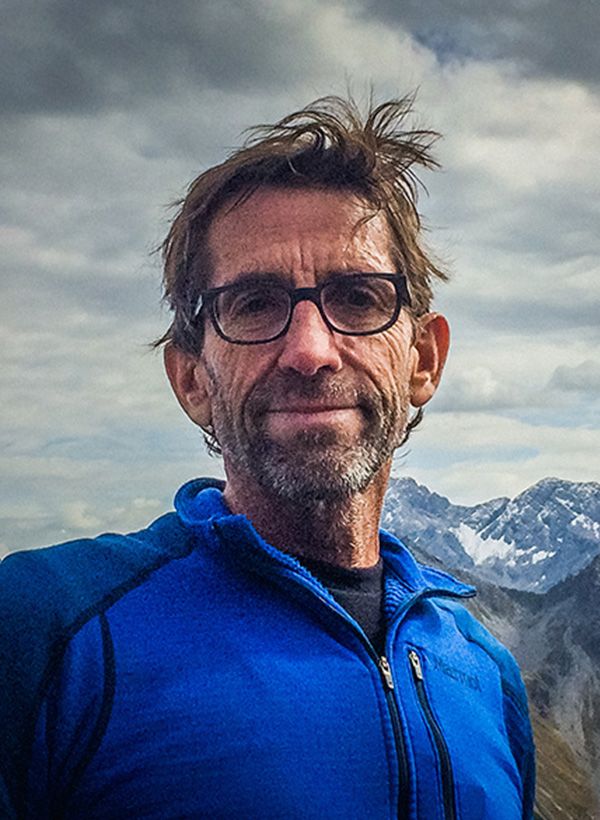
MICHAEL SCHOTT 


+49 174 9755492
m-schott@neumann-grafik.de
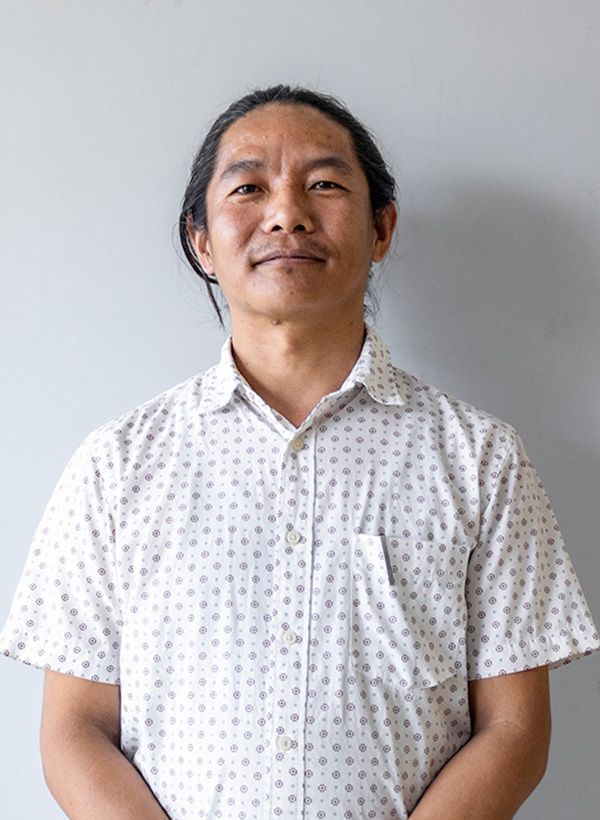
KUMAR RAI 
+977-9801236280
kumar@thamserkutrekking.com

NIMTE SHERPA 
+977-9801223977
info@thamserkutrekking.com
BOOK YOUR TRIP BOOK YOUR TRIP BOOK YOUR TRIP BOOK YOUR TRIP BOOK YOUR TRIP BOOK YOUR TRIP BOOK YOUR TRIP BOOK YOUR TRIP BOOK YOUR TRIP BOOK YOUR TRIP BOOK YOUR TRIP BOOK YOUR TRIP BOOK YOUR TRIP BOOK YOUR TRIP BOOK YOUR TRIP BOOK YOUR TRIP BOOK YOUR TRIP BOOK YOUR TRIP BOOK YOUR TRIP BOOK YOUR TRIP BOOK YOUR TRIP BOOK YOUR TRIP BOOK YOUR TRIP BOOK YOUR TRIP BOOK YOUR TRIP BOOK YOUR TRIP BOOK YOUR TRIP BOOK YOUR TRIP BOOK YOUR TRIP BOOK YOUR TRIP BOOK YOUR TRIP BOOK YOUR TRIP BOOK YOUR TRIP BOOK YOUR TRIP BOOK YOUR TRIP BOOK YOUR TRIP BOOK YOUR TRIP BOOK YOUR TRIP BOOK YOUR TRIP BOOK YOUR TRIP BOOK YOUR TRIP BOOK YOUR TRIP
